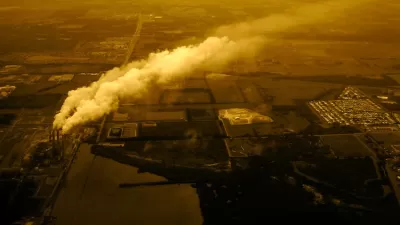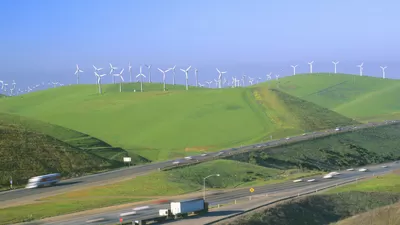On April 7, the illinois Industrial Carbon Capture and Storage commenced operations, taking carbon that corn sequestered from the atmosphere and storing it safely almost a mile and a half underground in a sandstone formation.
, according to a thorough description by the Melbourne-based Global CCS Institute.
Computer models that seek to chart our planet’s energy and climate future have leaned heavily on BECCS as a way to power future transportation and electricity systems while nonetheless keeping the planet’s warming below the dangerous level of 2 degrees Celsius.
“This is the first large scale project in the world on biofuels, and it takes us down the road towards negative emissions, which is the exciting part,” said Jeff Erikson, director of the Global CCS Institute
ICCS is operated by the Archer Daniels Midland (ADM) Company and managed by the National Energy Technology Laboratory (NETL) under agreement with ADM, the University of Illinois through the Illinois State Geological Survey, Schlumberger Carbon Services, and Richland Community College.
Not one but two projects, both funded by U.S. Department of Energy
ICCS follows the earlier Illinois Basin Decatur Project (IBDP) led by the Midwest Geological Sequestration Consortium at the University of Illinois, funded largely by the U.S. Department of Energy in 2007. Carbon injection operations into the Mount Simon Sandstone begin in November 2011 and cease three years later. In January 2015, the U.S. Department of Energy announces the IBDP had successfully captured and stored approximately one million tonnes of CO2, according to the Global CCS Institute's timeline on ICCS.
ICCS receives its first DOE funding in June 2010, begins construction in August 2011, and opens on April 7.
Petra Nova plant ribbon-cutting
The plant's opening was overshadowed a week later by the ribbon-cutting, with U.S. Secretary of Energy Rick Perry participating, marking the opening of the Petra Nova project, the world’s largest post-combustion carbon capture project, at a coal-burning power plant at the W. A. Parish Electric Generating Station in Thompsons, Texas. The project, which commenced operations in January, showcases clean coal technology utilizing enhanced oil recovery.
While the Illinois and Texas plants utilize different applications of both capturing and storing carbon, they share what may be the biggest challenge facing all CCS operations: Without a price on carbon, these operations may not be economically viable. "Not every coal power plant sits near an old oil field," remarks Mooney in his piece on the Petra Nova project ribbon-cutting on April 13.
FULL STORY: The quest to capture and store carbon – and slow climate change — just reached a new milestone

Maui's Vacation Rental Debate Turns Ugly
Verbal attacks, misinformation campaigns and fistfights plague a high-stakes debate to convert thousands of vacation rentals into long-term housing.

Planetizen Federal Action Tracker
A weekly monitor of how Trump’s orders and actions are impacting planners and planning in America.

Chicago’s Ghost Rails
Just beneath the surface of the modern city lie the remnants of its expansive early 20th-century streetcar system.

Bend, Oregon Zoning Reforms Prioritize Small-Scale Housing
The city altered its zoning code to allow multi-family housing and eliminated parking mandates citywide.

Amtrak Cutting Jobs, Funding to High-Speed Rail
The agency plans to cut 10 percent of its workforce and has confirmed it will not fund new high-speed rail projects.

LA Denies Basic Services to Unhoused Residents
The city has repeatedly failed to respond to requests for trash pickup at encampment sites, and eliminated a program that provided mobile showers and toilets.
Urban Design for Planners 1: Software Tools
This six-course series explores essential urban design concepts using open source software and equips planners with the tools they need to participate fully in the urban design process.
Planning for Universal Design
Learn the tools for implementing Universal Design in planning regulations.
planning NEXT
Appalachian Highlands Housing Partners
Mpact (founded as Rail~Volution)
City of Camden Redevelopment Agency
City of Astoria
City of Portland
City of Laramie




























